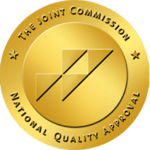Anxiety disorders are one of the most common mental health issues, affecting millions of people worldwide. However, for some individuals, anxiety is not the sole challenge they face. Comorbid anxiety, also known as coexisting anxiety, is a complex condition that refers to having multiple types of mental health disorders simultaneously.
Understanding this often misunderstood condition can help individuals and their loved ones better manage their mental health and improve their overall well-being. Our luxury rehab treatment in Los Angeles can help you find healing today.
What is Comorbid Anxiety?
Comorbid anxiety refers to the simultaneous presence of both anxiety and another medical condition, such as depression, substance abuse disorder, or chronic pain. It is common for individuals with anxiety disorders to have comorbid conditions, which can worsen the symptoms and impact treatment outcomes.
Comorbid anxiety can be challenging to diagnose and treat because the symptoms of the underlying medical condition may overlap with those of anxiety. Additionally, comorbid conditions can also increase the risk of developing other mental health issues. Therefore, it is essential for healthcare professionals to carefully assess and manage comorbid anxiety in individuals to ensure effective treatment for all conditions present.
If you or a loved one is struggling with a mental health disorder, our mental health treatment programs in Los Angeles may be right for you. Don’t hesitate to seek treatment.
What Are Common Anxiety Disorders That People Struggle With?
 Anxiety disorders are the most common mental illnesses in the United States, affecting approximately 40 million adults aged 18 and older. These disorders can manifest in various ways and have a significant impact on an individual’s daily life. It is essential to understand the different types of anxiety disorders that people struggle with to recognize their symptoms and seek appropriate treatment.
Anxiety disorders are the most common mental illnesses in the United States, affecting approximately 40 million adults aged 18 and older. These disorders can manifest in various ways and have a significant impact on an individual’s daily life. It is essential to understand the different types of anxiety disorders that people struggle with to recognize their symptoms and seek appropriate treatment.
- Generalized Anxiety Disorder (GAD): This disorder is characterized by excessive worry or fear about everyday situations. People with GAD experience uncontrollable and unrealistic worry, which can interfere with their ability to carry out daily tasks. Physical symptoms such as restlessness, muscle tension, fatigue, and difficulty concentrating may also accompany this disorder.
- Panic Disorder: People with panic disorder experience sudden and repeated episodes of intense fear known as panic attacks. Physical symptoms like heart palpitations, chest pain, shortness of breath, dizziness, and sweating can accompany these attacks. The fear of future panic attacks may lead individuals to avoid certain places or situations that trigger these attacks.
- Social Anxiety Disorder: Also known as social phobia, this disorder causes extreme fear and self-consciousness in social situations. Individuals with social anxiety disorder may feel worried about being judged or embarrassed in public, leading them to avoid social interactions or events altogether.
- Specific Phobias: People with specific phobias experience intense fear towards a particular object or situation that poses little or no actual danger. Examples of common specific phobias include fear of heights, spiders, flying, injections, etc.
- Obsessive-Compulsive Disorder (OCD): OCD is characterized by unwanted thoughts (obsessions) that lead to repetitive behaviors (compulsions) to ease anxiety caused by these thoughts. For instance, someone may develop an irrational fear of germs (obsession) and engage in excessive hand washing (compulsion).
- Post-Traumatic Stress Disorder (PTSD): This disorder can develop after experiencing or witnessing a traumatic event. People with PTSD may experience flashbacks, nightmares, and severe anxiety triggered by memories of the event.
Anxiety disorders are treatable, and people struggling with them can benefit from cognitive behavioral therapy (CBT), medication, or a combination of both. It is essential to seek professional help if you or someone you know is experiencing symptoms of an anxiety disorder as early intervention can lead to better outcomes.
Why is it Difficult to Diagnose Co-Occurring Mental Health Conditions?
Diagnosing and treating one mental health condition can be challenging enough, but when an individual is dealing with two conditions at the same time, it can make the process even more complex. Several factors contribute to the difficulty in diagnosing two mental health conditions simultaneously.
- There can often be overlapping symptoms. For example, symptoms of anxiety and depression can be very similar, making it hard for a healthcare professional to determine which condition is the primary concern. This can also lead to misdiagnosis or underdiagnosis, which can delay proper treatment.
- There may be instances where one condition may mask or hide symptoms of another condition. This can occur when one condition becomes more severe and dominates over the other, making it harder to identify and treat the underlying issue. Additionally, some individuals may only seek treatment for their most distressing symptoms, rather than all of their mental health concerns, making it challenging for healthcare professionals to get a full understanding of their overall mental health status.
- The stigma surrounding mental illness. Many individuals may feel ashamed or embarrassed about having multiple diagnoses and may not disclose all of their symptoms during appointments due to fear of judgment or discrimination. This lack of disclosure can also hinder accurate diagnosis and appropriate inpatient or outpatient treatment planning.
- There are limitations within the current diagnostic criteria for mental health disorders. The Diagnostic and Statistical Manual of Mental Disorders (DSM-5), which is used by healthcare professionals to diagnose mental illnesses, focuses on discrete categories rather than considering how different disorders may overlap or intersect with one another. This means that some individuals may meet the criteria for multiple disorders but only receive a diagnosis for one.
Is it Common to Have Comorbid Anxiety and Major Depression?
Yes, it is common to have comorbid anxiety and major depression. Studies show that approximately 60% of individuals with major depression also experience symptoms of anxiety. The relationship between these two disorders is complex and often intertwined, making it difficult to differentiate between the two. This can also complicate treatment as both conditions may need to be addressed simultaneously.
It is important for individuals experiencing symptoms of both anxiety and major depression to seek proper diagnosis and treatment from a mental health professional.
What Other Mental Health Disorders Co-Occur With Anxiety?
 Anxiety is a complex mental health disorder that can often manifest alongside other mental health disorders. Some of the most common co-occurring disorders with anxiety include:
Anxiety is a complex mental health disorder that can often manifest alongside other mental health disorders. Some of the most common co-occurring disorders with anxiety include:
- Depression: Anxiety and depression are often referred to as “sister disorders” because they frequently occur together. According to the Anxiety and Depression Association of America, nearly 50% of people diagnosed with depression also have an anxiety disorder.
- Panic disorder: Panic disorder involves sudden and recurrent panic attacks, which can be accompanied by symptoms like heart palpitations, shortness of breath, and dizziness. Many individuals with anxiety also experience panic attacks, making these two disorders highly correlated.
- Obsessive-compulsive disorder (OCD): OCD is characterized by unwanted and intrusive thoughts (obsessions) that lead to repetitive behaviors (compulsions). People with anxiety may also experience obsessive thoughts and feelings of needing to perform certain rituals or behaviors to cope with their anxiety.
- Post-traumatic stress disorder (PTSD): PTSD is a mental health disorder that develops in response to a traumatic event or experience such as physical or sexual abuse, natural disaster, or combat exposure. Individuals with PTSD may struggle with intense anxiety symptoms such as flashbacks, nightmares, and hypervigilance.
- Substance use disorders: It is common for individuals with anxiety to turn to drugs or alcohol as a way of coping with their symptoms. Unfortunately, this can lead to the development of a substance use disorder, which can further exacerbate their anxiety symptoms.
- Eating disorders: Research has shown a strong link between eating disorders (such as anorexia nervosa and bulimia nervosa) and anxiety disorders. Individuals with eating disorders are four times more likely to have an anxiety disorder compared to those without an eating disorder.
It is crucial for individuals experiencing symptoms of anxiety to seek professional help to properly address all underlying mental health conditions and develop an effective treatment plan. With the help of our dual diagnosis treatment center, it is possible to manage the symptoms of anxiety and any co-occurring disorders.
How Do You Live With Comorbid Anxiety?
Living with comorbid anxiety can be challenging and may require a multifaceted approach to manage symptoms and improve overall well-being.
The first step in living with comorbid anxiety is to seek professional help from a mental health provider. They can accurately diagnose the specific types of anxiety disorders present and create a personalized treatment plan. This may include mental health therapy programs, medication, or a combination of both.
In addition to seeking professional help, developing healthy coping mechanisms is crucial in managing comorbid anxiety. These can include relaxation techniques such as deep breathing and mindfulness meditation. Regular exercise, adequate sleep, and maintaining a healthy diet are also important for managing symptoms of anxiety.
It is also essential to identify triggers that may worsen symptoms of comorbid anxiety. This could be certain situations or environments that cause increased stress and anxious feelings. Avoiding or minimizing exposure to these triggers when possible can help reduce overall levels of anxiety.
Having a strong support system is also beneficial in managing comorbid anxiety. This can include family therapy, friends, or support groups where individuals can share their experiences and offer each other encouragement and understanding.
Finally, it is critical to prioritize self-care and self-compassion when living with comorbid anxiety. This includes setting boundaries, saying no when needed, and taking time for oneself to relax and recharge.
With proper management strategies in place, individuals can learn to live with comorbid anxiety successfully and improve their overall quality of life.
Westwind Recovery® Can Help You Break Free From Comorbid Anxiety
At Westwind Recovery®, we understand that living with comorbid anxiety can be overwhelming and exhausting. We offer specialized treatment programs to help you break free from the cycle of anxiety. Our compassionate staff is dedicated to helping you overcome your fears and insecurities so that you can build a fulfilling life in recovery.
Don’t let comorbid anxiety hold you back any longer. Contact us to learn more about our comprehensive treatment options. Start your journey toward lasting freedom today!

Dr. Deena is the Chief Clinical Officer of Westwind Recovery®, an award-winning outpatient treatment center in Los Angeles where she oversees the clinical and administrative program and treatment methods. Dr. Deena is a doctor of psychology and licensed clinical social worker since 1993. LCSW #20628. Originally from the East Coast, Dr. Deena has worked running treatment centers, worked as a therapist in psychiatric hospitals as well as school settings and currently has a thriving private practice in the LA area. Dr. Deena has appeared regularly on the Dr. Phil Show as an expert since 2003. She has also been featured on many other TV shows, podcasts and has contributed to written publications as well as podcasts.




